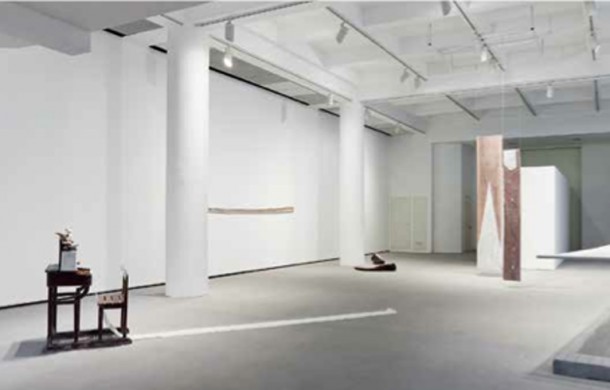A POTENT FORCE: DUAN JIANYU AND HU XIAOYUAN
| May 22, 2013 | Post In LEAP 20

For a contemporary art exhibition of any scale, plans can change quickly. Whether it is achieving the potential of the concept through implementation or meeting local requirements for fire safety at the site, the audience remains unaware of the multitude of factors that influence the final outcome. So for artists, their artworks, and exhibition layout, making changes is not important. How it all shakes out in the end, after the inevitable rounds of changes, is what matters. “A Potent Force” excels in its management of space, giving equal area to each artist, allowing both to leave deep impressions.
The exhibition’s English and Chinese titles are succinct reflections of curator Karen Smith’s emphasis on the characteristics of each artist that she wants the audience to see. The English title “A Potent Force” stresses the emotion both artists infuse into their works, which emanate a compelling and impressive power. The Chinese title “Tihu” refers to esoteric wisdom and the Upanishads, highlighting the fact that although the two artists favor different media, they both carry a creative attitude centered on rationality, cognition, and self-reflection.
Now, about the layout. There is a type of exhibition that is unapproachable during the opening— when the wine and the party force the interested viewer to return at a later date. The layout for “A Potent Force,” however, made it possible for the viewer to enter quickly into a mental state of seeing and absorbing even amidst the opening’s obviously festive atmosphere. There is a clear structure. On each floor, only works by the same artist are displayed, instead of mixing the works together. This method takes into consideration the public nature of art museums, granting patrons of different ages and aims easy accessibility to the exhibition. It also allows the artists to make better use of the gallery space. And for a long time afterward, the viewer can still recall the placement of a certain work.
Taking a closer look at both artists’ spaces, one sees that the curator has selected works that reflect each artist’s focus and distinctive personal style, presenting them as solo shows. In terms of content, the eight-year age difference between the artists is noticeable in their scrutiny of the outside world. This easy and clever distinction is also an important prompt of the exhibition, leading the audience to accept the artworks and inspiring in them additional thoughts. For example, the motifs of survival and education recur in Hu Xiaoyuan’s works. In Useless (2008), she tears apart calligraphy paper in a mood, and then calmly reassembles the pieces together. See (2012) examines people’s wishes for seeing and understanding, while also contemplating the modern conundrum of habitual speed-reading and lack of patience. As an extension of the self, these works calmly express the healthy attitude that choosing to remain in the world also means accepting the grind of grief and joy.
Duan Jianyu’s areas of focus are often equally serious and grim, such as longing for the homeland, and the collective anxiety of identification stemming from regional cultures. Yet her paintings communicate an agile and tranquil intimacy. Duan cleverly integrates text with her paintings, making imagination reasonable while fluidly expressing ideas drawn from interactions with the outside world, as well as her exploration of the language of drawing. One imagines that displaying her richly unencumbered paintings must have posed quite a challenge, especially within the irregular spaces on the fourth and fifth floors of the museum.
The planning process probably looked like a session of family “systemic constellation” therapy, where the emphasis would have been on continuously adjusting the positions until everything felt balanced. By clarifying the circumstances and features of energy and connection, the interrelationship and energies hidden within the artworks can be shown. Naturally, the results are promising. During the lecture that took place the day after the exhibition’s opening, Duan kept repeating to the curator, “Really, I think that you did very well at positioning [the paintings], much better than what I had done before.” (Translated by JiaJing Liu)


